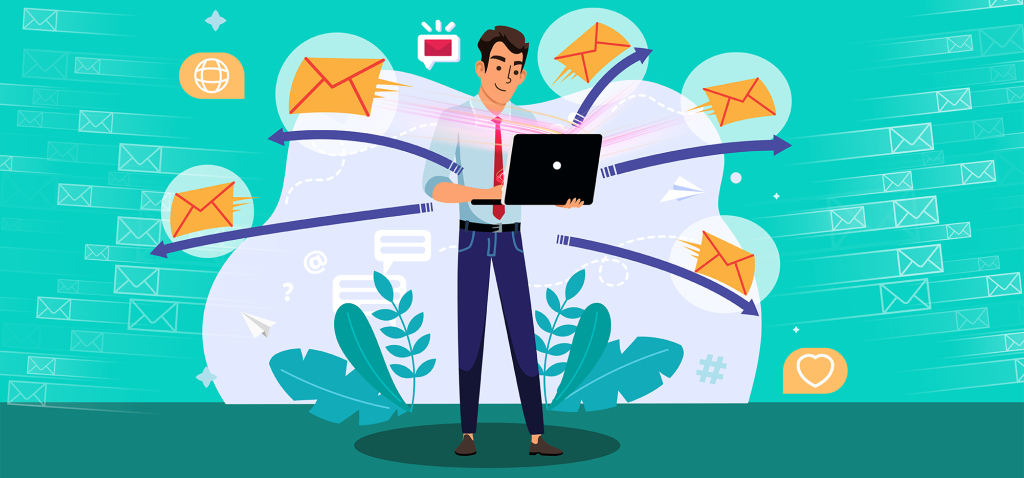Email has become an essential tool for communication in both our personal and professional lives. However, with the sheer volume of emails that we receive daily, managing our inbox can become overwhelming. If you find yourself drowning in a sea of unread emails and struggling to keep up with your inbox, fear not – there are smart email management tips that can help you stay on top of your emails and maintain a clutter-free inbox. In this article, we will discuss some effective email management strategies that can help you streamline your workflow and boost your productivity.
1. Set specific times for checking emails
One of the biggest mistakes people make when it comes to managing their emails is constantly checking their inbox throughout the day. This can be a major productivity killer, as it interrupts your workflow and distracts you from the task at hand. Instead, try setting specific times during the day when you will check your emails. For example, you could check your emails first thing in the morning, after lunch, and before you finish work for the day. By setting boundaries around when you check your emails, you can avoid getting sucked into your inbox and focus on more important tasks.
2. Create folders and labels
Organizing your emails into folders and labels can help you keep track of important messages and declutter your inbox. Create folders based on specific categories such as work, personal, newsletters, and promotions. You can also use labels to tag emails with relevant keywords or topics. This will make it easier to locate specific emails when you need them and prevent your inbox from becoming a jumbled mess.
3. Unsubscribe from unnecessary newsletters
We all receive countless newsletters and promotional emails that clog up our inbox and distract us from important messages. Take some time to go through your inbox and unsubscribe from newsletters that you no longer find useful or relevant. This will not only reduce the clutter in your inbox but also help you focus on the emails that truly matter.
4. Use filters and rules
Most email providers offer filters and rules that allow you to automatically organize incoming emails based on certain criteria. Set up filters to automatically sort emails into specific folders, mark them as important, or flag them for follow-up. This will save you time and effort in manually sorting through your emails and ensure that important messages are not overlooked.
5. Keep your responses concise and to the point
When replying to emails, keep your responses brief and to the point. Avoid writing lengthy paragraphs or including unnecessary information that can confuse the recipient. Be clear, concise, and respectful in your communication to ensure that your message is easily understood and effectively conveys your intended meaning.
6. Use templates for common responses
If you find yourself typing the same responses to multiple emails, consider creating email templates for common replies. This can save you time and effort in composing similar messages and ensure consistency in your communication. Many email providers offer the ability to create and save templates for quick and easy use.
7. Prioritize and delegate tasks
Not all emails require an immediate response or action. Prioritize your emails based on their importance and urgency, and delegate tasks to the appropriate team members if necessary. This will help you focus on the most critical tasks and avoid getting bogged down by less important emails.
8. Use email tracking tools
There are various email tracking tools available that can help you monitor the status of your emails, such as whether they have been opened or clicked on. These tools can be useful for following up on important emails or gauging the effectiveness of your email communications. Consider using email tracking tools to stay informed about the status of your messages and improve your email management skills.
9. Set boundaries and establish email etiquette
Setting boundaries around your email communication can help you manage your inbox more effectively and avoid burnout. Establish clear guidelines for when and how you expect to be contacted via email, and communicate these expectations to your colleagues and clients. By establishing email etiquette within your organization, you can ensure that emails are used efficiently and respectfully.
10. Take regular breaks from your inbox
Finally, remember to take regular breaks from your inbox to refresh and recharge. Constantly checking your emails can lead to burnout and reduce your productivity. Take time to step away from your inbox, go for a walk, or engage in activities that help you relax and rejuvenate. By taking care of yourself and managing your email habits thoughtfully, you can maintain a healthy work-life balance and avoid feeling overwhelmed by your inbox.
In conclusion, smart email management is essential for staying organized, productive, and stress-free in our digital age. By implementing these tips and strategies, you can streamline your workflow, declutter your inbox, and communicate more effectively via email. Remember that email is just a tool – it should serve you, not overwhelm you. With a proactive approach to email management and a commitment to maintaining healthy email habits, you can harness the power of email to enhance your productivity and success.

